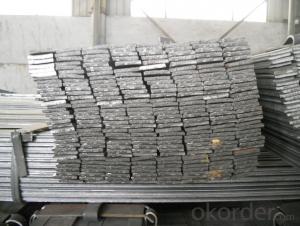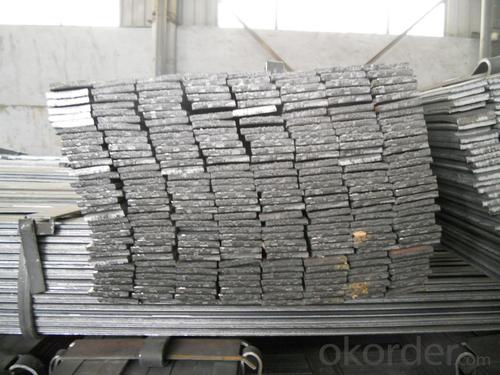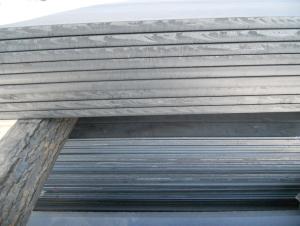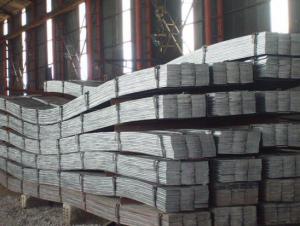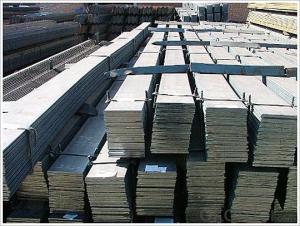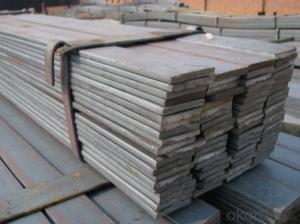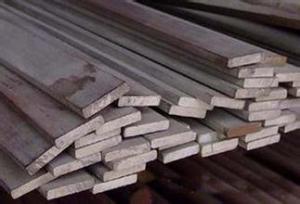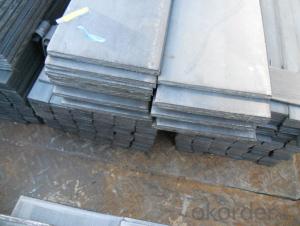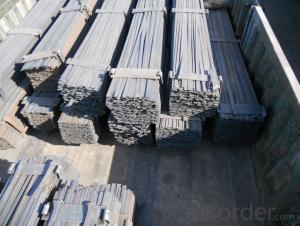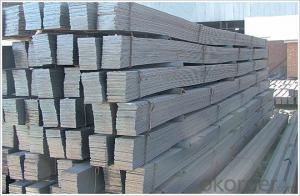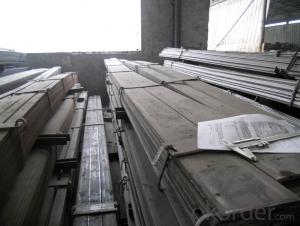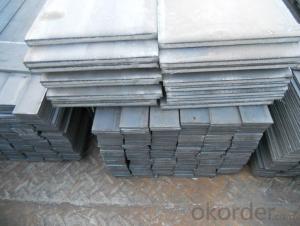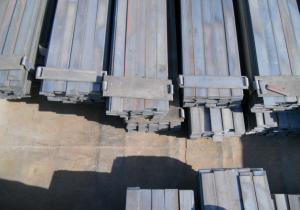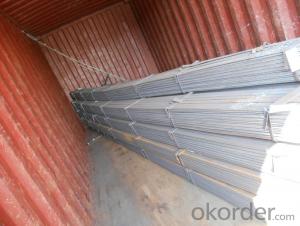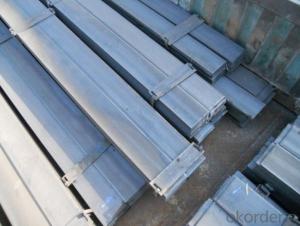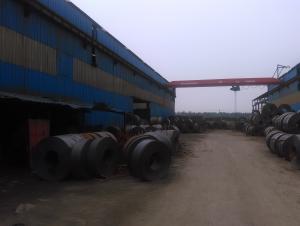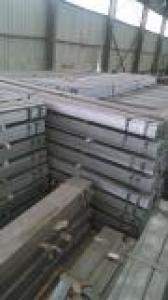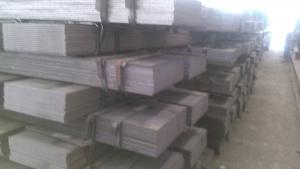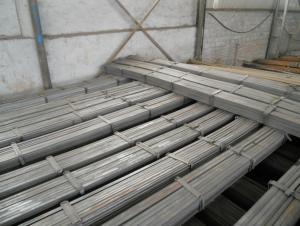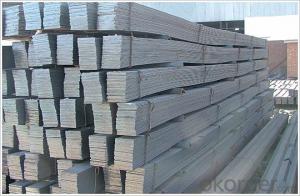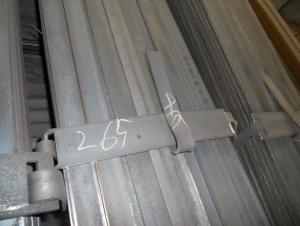Q235 Hot Rolled Steel Flat Bar
- Loading Port:
- Tianjin
- Payment Terms:
- TT OR LC
- Min Order Qty:
- -
- Supply Capability:
- 100000 m.t./month
OKorder Service Pledge
OKorder Financial Service
You Might Also Like
Specification of High Quality Flat Bar
Commodity: High Quality Flat Bar
Standard: GB;ASTM;JIS
Material: Q195-Q235;SS400;
Brand name: FLATSPACE
Origin place: China
Thickness: 3mm-30mm
Width:20mm-200mm
Length: Max 12m
Certification: SGS/BV
Chemical composition of Q235
Alloy No | Grade | Element(%) | ||||
C
| Mn
| S
| P
| Si
| ||
Q235
|
B
|
0.12—0.20 |
0.3—0.7 |
≤0.045 |
≤0.045
|
≤0.3
|
Physical properties of Q235
Alloy No | Grade | Yielding strength point(Mpa) | Tensile strength (Mpa) | Elongation after fracture(%) | ||||||
Thickness (mm) | Thickness (mm) | |||||||||
≤16 | >16--40 | >40--60 | >60--100 |
| ≤16 | >16--40 | >40--60 | >60--100 | ||
≥ | ≥ | |||||||||
Q235 |
B |
235 |
225 |
215 |
205 |
375--500 |
26 |
25 |
24 |
23 |
Usage/Applications of High Quality Flat Bar
Widely used for construction,
Machinery manufacturing,
Iron tower steel structure,
Shipbuilding;
Steel grating,
Staircase,
Bridge,
Viaduct,
Railway spare parts,
Boilers making etc.
Production Flow of High Quality Flat Bar
The steel flat bar is made through three processes:
1.Feeding the material: Feeding the row material (the steel plate) to Slitting Line.
2.Slitting:The steel plate would be slitted into expected width by lengthways cutter.
3. Leveled and cutting: The plat bar would be ground into level by the grinder and then cut into required length.
Packaging & Delivery of High Quality Flat Bar
Packaging Details: The Steel Flat Bars are packed in bundles and loaded in 20 feet/40 feet container, or shipped by bulk cargo ,also we can do as customer's requirements.
Delivery Details:30~45 days upon the receipt of buyer payment by T.T. or L/C.
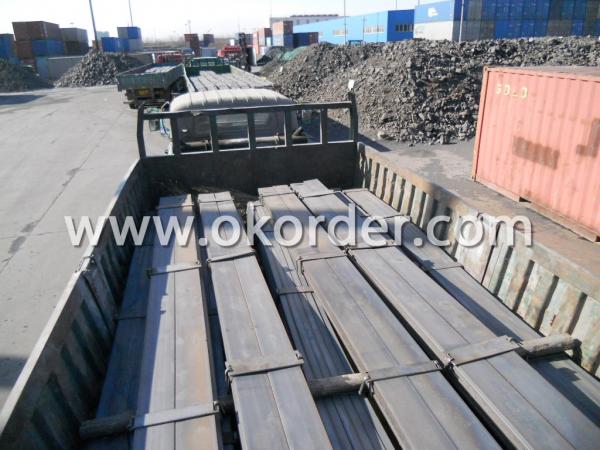
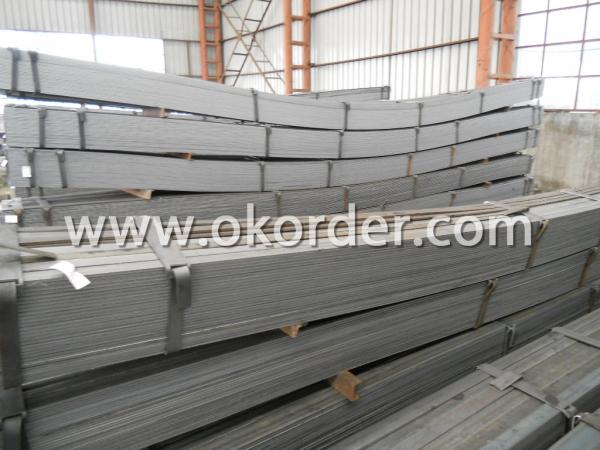
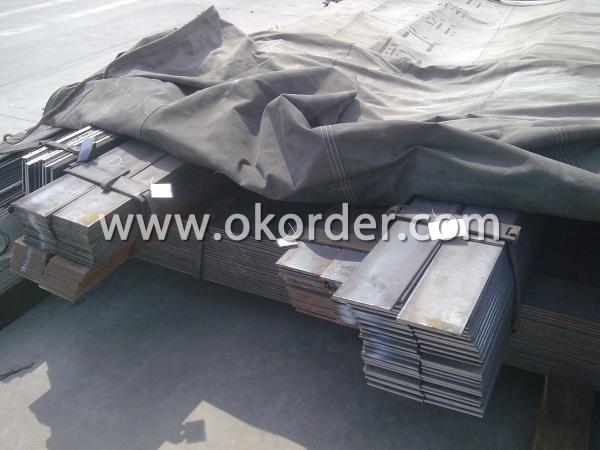
- Q: What is the typical bend radius for steel flat bars?
- The typical bend radius for steel flat bars can vary depending on the specific dimensions and thickness of the bar, but generally, a safe bend radius is around twice the bar's thickness.
- Q: What are the different specifications for steel flat bars?
- Steel flat bars are available in a variety of specifications that determine their size, shape, and composition. These specifications encompass dimensions, such as width, thickness, and length, as well as the type of steel utilized and any additional properties. Dimensions for steel flat bars exhibit considerable variation. Widths commonly range from 1/2 inch to 12 inches, while thicknesses can span from 1/8 inch to several inches. Lengths are typically denoted in feet or meters, with standard lengths, such as 6 or 12 feet, readily accessible, or customized lengths tailored to the desired dimensions. The type of steel employed in flat bars also displays diversity. Carbon steel, a fundamental and versatile choice, and stainless steel, which offers resistance against corrosion and presents an appealing aesthetic, are the most prevalent types. Carbon steel flat bars are further categorized based on their carbon content, with low-carbon, medium-carbon, and high-carbon steel constituting widely available options. Moreover, steel flat bars can possess supplementary properties based on their intended utilization. For instance, certain flat bars may undergo heat treatment to augment their strength or hardness, while others may undergo galvanization or coating to heighten their resistance to corrosion. It is important to note that different countries and industries may adhere to their own distinct standards or specifications for steel flat bars. These standards, such as ASTM (American Society for Testing and Materials) or EN (European Norms), ensure consistency and quality across various manufacturers and applications. Consequently, it is crucial to consider these standards and specifications when selecting steel flat bars for a specific project or application.
- Q: Can steel flat bars be machined or drilled?
- Yes, steel flat bars can be machined or drilled. Steel is a versatile and durable material that can be easily worked with using various machining processes. Machining refers to the process of shaping or removing material from a workpiece using cutting tools, and drilling is one of the common machining operations used to create holes in a material. Steel flat bars can be machined or drilled to create specific shapes, sizes, or holes, depending on the desired application or design requirements. However, it is important to consider the hardness and thickness of the steel flat bar, as these factors can affect the choice of tools and machining techniques used.
- Q: How do steel flat bars contribute to the fire resistance of structures?
- Steel flat bars contribute to the fire resistance of structures in several ways. Firstly, steel is a non-combustible material, which means it does not burn or contribute to the spread of fire. This property alone makes steel flat bars an excellent choice for construction in fire-prone areas. Additionally, steel flat bars have a high melting point compared to other materials commonly used in construction. This means that in the event of a fire, steel flat bars will maintain their structural integrity for a longer period of time, providing a secure framework for the building. This is crucial for the safety of occupants and firefighters, as it allows for a longer period of evacuation and firefighting efforts. Furthermore, steel flat bars can act as fire barriers, preventing the spread of flames from one area of the structure to another. When used in conjunction with fire-resistant materials such as gypsum board or concrete, steel flat bars can create compartmentalized spaces that contain the fire, limiting its ability to spread and minimizing the damage caused. Moreover, steel flat bars can help to reinforce the overall strength and stability of a structure, even under extreme heat conditions. This is due to the high tensile strength and durability of steel. By incorporating steel flat bars into the structural design, buildings can be better equipped to withstand the effects of fire and maintain their load-bearing capacity. In summary, steel flat bars contribute to the fire resistance of structures by being non-combustible, maintaining their structural integrity at high temperatures, acting as fire barriers, and enhancing overall structural strength. These properties make steel flat bars an essential component in fire-resistant construction, ensuring the safety and longevity of buildings in the face of fire hazards.
- Q: Are steel flat bars suitable for architectural cladding?
- Architectural cladding can benefit from the use of steel flat bars. Steel is a favored material due to its durability, strength, and versatility. By employing steel flat bars, one can achieve a sleek and contemporary appearance in architectural cladding. These bars are easily molded, trimmed, and fused to attain the desired look. Furthermore, they can be treated with surface finishes like galvanization, powder coating, or painting to enhance their visual appeal and safeguard against corrosion. In cladding systems, steel flat bars can serve as either vertical or horizontal components, granting both structural support and visually pleasing facades. Additionally, steel is an eco-friendly choice as it can be recycled. However, it is vital to evaluate the specific requirements of the project, including local climate conditions, maintenance needs, and desired design aesthetic, to determine if steel flat bars are the best fit for the architectural cladding application.
- Q: How do you prevent steel flat bars from scratching or damaging surfaces?
- One way to prevent steel flat bars from scratching or damaging surfaces is by applying a protective covering or padding to the areas in contact with the bars. This can be done using materials such as felt, rubber, or foam. Additionally, using a lifting device or handling the bars with care can help minimize the risk of scratching or damaging surfaces.
- Q: Are steel flat bars used in the manufacturing of agricultural machinery?
- Yes, steel flat bars are commonly used in the manufacturing of agricultural machinery. These flat bars are often used for structural components, such as frames, supports, and brackets, due to their high strength and durability. They provide stability and rigidity to the machinery, ensuring it can withstand heavy loads and harsh working conditions. Additionally, steel flat bars are easily weldable, making them a versatile choice for joining different parts of agricultural machinery together. Overall, the use of steel flat bars in the manufacturing of agricultural machinery helps to enhance the performance, longevity, and reliability of these machines in the agricultural industry.
- Q: Do I need to make the ring galvanized flat steel ground connection between the electric well and the distribution room?
- There is also a dark, in the foundation of the house to consider the distribution of indoor total potential imbalance, in the basic reinforcement welding has been laid. Later, when installing the equipment, just connect in place
- Q: Can steel flat bars be used for making food processing equipment?
- No, steel flat bars are not suitable for making food processing equipment as they can corrode and contaminate the food. Stainless steel or food-grade materials are typically used for food processing equipment to ensure safety and hygiene.
- Q: Do lightning protection, lead out of the galvanized round steel, flat steel needs to be inspected?
- The corrosion resistance of cold galvanizing is not as good as that of hot-dip galvanizing. It is used as lightning protection and grounding material. It is corroded quickly, and the grounding resistance is raised rapidly. It exceeds the required resistance.
Send your message to us
Q235 Hot Rolled Steel Flat Bar
- Loading Port:
- Tianjin
- Payment Terms:
- TT OR LC
- Min Order Qty:
- -
- Supply Capability:
- 100000 m.t./month
OKorder Service Pledge
OKorder Financial Service
Similar products
Hot products
Hot Searches
Related keywords
